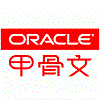Spark Getting started
- Getting Started
- Stopping the server
- Routes
- Request
- Response
- Query Maps
- Cookies
- Sessions
- Halting
- Filters
- Redirects
- Exception Mapping
- Static files
- ResponseTransformer
- Views and Templates
- Port
- Embedded Webserver
- Other Webserver
- Getting Started
- Stopping the server
- Routes
- Request
- Response
- Query Maps
- Cookies
- Sessions
- Halting
- Filters
- Redirects
- Exception Mapping
- Static files
- ResponseTransformer
- Views and Templates
- Port
- Embedded Webserver
- Other Webserver
- Getting Started
- Stopping the server
- Routes
- Request
- Response
- Query Maps
- Cookies
- Sessions
- Halting
- Filters
- Redirects
- Exception Mapping
- Static files
- ResponseTransformer
- Views and Templates
- Port
- Embedded Webserver
- Other Webserver
Getting started
Add the maven dependency:
<dependency>
<groupId>com.sparkjava</groupId>
<artifactId>spark-core</artifactId>
<version>2.0.0</version>
</dependency>Start coding:
import static spark.Spark.*;
public class HelloWorld {
public static void main(String[] args) {
get("/hello", (req, res) -> "Hello World");
}
}Run and view:
http://localhost:4567/helloThat was easy, right? Spark is the simplest Java web framework to set up, while still providing enough functionality for many types of projects.
Stopping the Server
By calling the stop() method the server is stopped and all routes are cleared.
Routes
The main building block of a Spark application is a set of routes. A route is made up of three simple pieces:
- A verb (get, post, put, delete, head, trace, connect, options)
- A path (/hello, /users/:name)
- A callback (request, response) -> { }
Routes are matched in the order they are defined. The first route that matches the request is invoked.
get("/", (request, response) -> {
// .. Show something ..
});
post("/", (request, response) -> {
// .. Create something ..
});
put("/", (request, response) -> {
// .. Update something ..
});
delete("/", (request, response) -> {
// .. annihilate something ..
});
options("/", (request, response) -> {
// .. appease something ..
});Route patterns can include named parameters, accessible via the params method on the request object:
// matches "GET /hello/foo" and "GET /hello/bar"
// request.params(":name") is 'foo' or 'bar'
get("/hello/:name", (request, response) -> {
return "Hello: " + request.params(":name");
});Route patterns can also include splat (or wildcard) parameters. These parameters can be accessed by using the splat method on the request object:
// matches "GET /say/hello/to/world"
// request.splat()[0] is 'hello' and request.splat()[1] 'world'
get("/say/*/to/*", (request, response) -> {
return "Number of splat parameters: " + request.splat().length;
});Request
In the handle method request information and functionality is provided by the request parameter:
request.body(); // request body sent by the client
request.cookies(); // request cookies sent by the client
request.contentLength(); // length of request body
request.contentType(); // content type of request.body
request.headers(); // the HTTP header list
request.headers("BAR"); // value of BAR header
request.attributes(); // the attributes list
request.attribute("foo"); // value of foo attribute
request.attribute("A", "V"); // sets value of attribute A to V
request.host(); // "example.com"
request.ip(); // client IP address
request.pathInfo(); // the path info
request.params("foo"); // value of foo path parameter
request.params(); // map with all parameters
request.port(); // the server port
request.queryMap(); // the query map
request.queryMap("foo"); // query map for a certain parameter
request.queryParams("FOO"); // value of FOO query param
request.queryParams(); // the query param list
request.raw(); // raw request handed in by Jetty
request.requestMethod(); // The HTTP method (GET, ..etc)
request.scheme(); // "http"
request.session(); // session management
request.splat(); // splat (*) parameters
request.url(); // "http://example.com/foo"
request.userAgent(); // user agentResponse
In the handle method response information and functionality is provided by the response parameter:
response.body("Hello"); // sets content to Hello
response.header("FOO", "bar"); // sets header FOO with value bar
response.raw(); // raw response handed in by Jetty
response.redirect("/example"); // browser redirect to /example
response.status(401); // set status code to 401
response.type("text/xml"); // set content type to text/xmlQuery Maps
Query maps allows you to group parameters to a map by their prefix. This allows you to group two parameters like user[name] and user[age] to a user map.
request.queryMap().get("user", "name").value();
request.queryMap().get("user").get("name").value();
request.queryMap("user").get("age").integerValue();
request.queryMap("user").toMap();Cookies
request.cookies(); // get map of all request cookies
request.cookie("foo"); // access request cookie by name
response.cookie("foo", "bar"); // set cookie with a value
response.cookie("foo", "bar", 3600); // set cookie with a max-age
response.cookie("foo", "bar", 3600, true); // secure cookie
response.removeCookie("foo"); // remove cookieSessions
Every request has access to the session created on the server side, provided with the following methods:
request.session(true) // create and return session
request.session().attribute("user") // Get session attribute 'user'
request.session().attribute("user", "foo") // Set session attribute 'user'
request.session().removeAttribute("user", "foo") // Remove session attribute 'user'
request.session().attributes() // Get all session attributes
request.session().id() // Get session id
request.session().isNew() // Check is session is new
request.session().raw() // Return servlet objectHalting
To immediately stop a request within a filter or route use:
halt();You can also specify the status when halting:
halt(401);Or the body:
halt("This is the body");...or both:
halt(401, "Go away!");Filters
Before filters are evaluated before each request and can read the request and read/modify the response.
To stop execution, use halt:
before((request, response) -> {
boolean authenticated;
// ... check if authenticated
if (!authenticated) {
halt(401, "You are not welcome here");
}
});After filters are evaluated after each request and can read the request and read/modify the response:
after((request, response) -> {
response.header("foo", "set by after filter");
});Filters optionally take a pattern, causing them to be evaluated only if the request path matches that pattern:
before("/protected/*", (request, response) -> {
// ... check if authenticated
halt(401, "Go Away!");
});Redirects
You can trigger a browser redirect with the redirect helper method:
response.redirect("/bar");You can also trigger a browser redirect with specific http 3XX status code:
response.redirect("/bar", 301); // moved permanentlyException Mapping
To handle exceptions of a configured type for all routes and filters:
get("/throwexception", (request, response) -> {
throw new NotFoundException();
});
exception(NotFoundException.class, (e, request, response) -> {
response.status(404);
response.body("Resource not found");
});Static Files
You can assign a folder in the classpath serving static files with the staticFileLocation method. Note that the public directory name is not included in the URL.
A file /public/css/style.css is made available as http://{host}:{port}/css/style.css
staticFileLocation("/public"); // Static filesYou can also assign an external folder (not in the classpath) serving static files with the externalStaticFileLocation method.
externalStaticFileLocation("/var/www/public"); // Static filesResponseTransformer
Mapped routes that transforms the output from the handle method. This is done by extending the ResponseTransformer and pass this to the mapping method. Example Of a route transforming output to JSON using Gson:
import com.google.gson.Gson;
public class JsonTransformer implements ResponseTransformer {
private Gson gson = new Gson();
@Override
public String render(Object model) {
return gson.toJson(model);
}
}and how it is used (MyMessage is a bean with one member 'message'):
get("/hello", "application/json", (request, response) -> {
return new MyMessage("Hello World");
}, new JsonTransformer());Views and Templates
A TemplateViewRoute is built up by a path (for url-matching) and the template engine holding the implementation of the 'render' method. Instead of returning the result of calling toString() as body the TemplateViewRoute returns the result of calling render method.
The primary purpose of this kind of Route is to provide a way to create generic and reusable components for rendering output using a Template Engine.
Freemarker
Renders objects to HTML using the Freemarker template engine.
Maven dependency:
<dependency>
<groupId>com.sparkjava</groupId>
<artifactId>spark-template-freemarker</artifactId>
<version>2.0.0</version>
</dependency>Source: spark-template-freemarker.
Code example: spark-template-freemarker example.
Velocity
Renders objects to HTML using the Velocity template engine.
Maven dependency:
<dependency>
<groupId>com.sparkjava</groupId>
<artifactId>spark-template-velocity</artifactId>
<version>2.0.0</version>
</dependency>Source: spark-template-velocity.
Code example: spark-template-velocity example.
Mustache
Renders objects to HTML using the Mustache template engine.
Maven dependency:
<dependency>
<groupId>com.sparkjava</groupId>
<artifactId>spark-template-mustache</artifactId>
<version>1.0.0</version>
</dependency>Source: spark-template-mustache.
Code example: spark-template-mustache example.
Port
By default, Spark runs on port 4567. If you want to set another port use setPort. This has to be done before using routes and filters:
setPort(9090); // Spark will run on port 9090Embedded webserver
Standalone Spark runs on an embedded Jetty web server.
Other webserver
To run Spark on a web server instead of standalone first of all an implementation of the interface spark.servlet.SparkApplication is needed. In the init() method the routes should be initialized. In your web.xml the following filter needs to be configured:
<filter>
<filter-name>SparkFilter</filter-name>
<filter-class>spark.servlet.SparkFilter</filter-class>
<init-param>
<param-name>applicationClass</param-name>
<param-value>com.company.YourApplication</param-value>
</init-param>
</filter>
<filter-mapping>
<filter-name>SparkFilter</filter-name>
<url-pattern>/*</url-pattern>
</filter-mapping>Javadoc
After getting the source from GitHub run:
mvn javadoc:javadocThe result is put in /target/site/apidocs
Examples
Examples can be found on the project's page on GitHub
Spark is created and maintained by Per Wendel. Logo and website by David Åse





